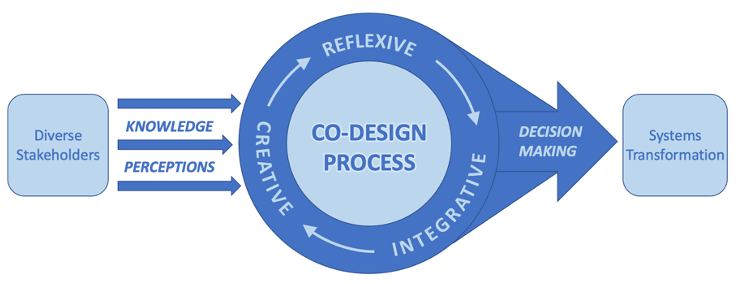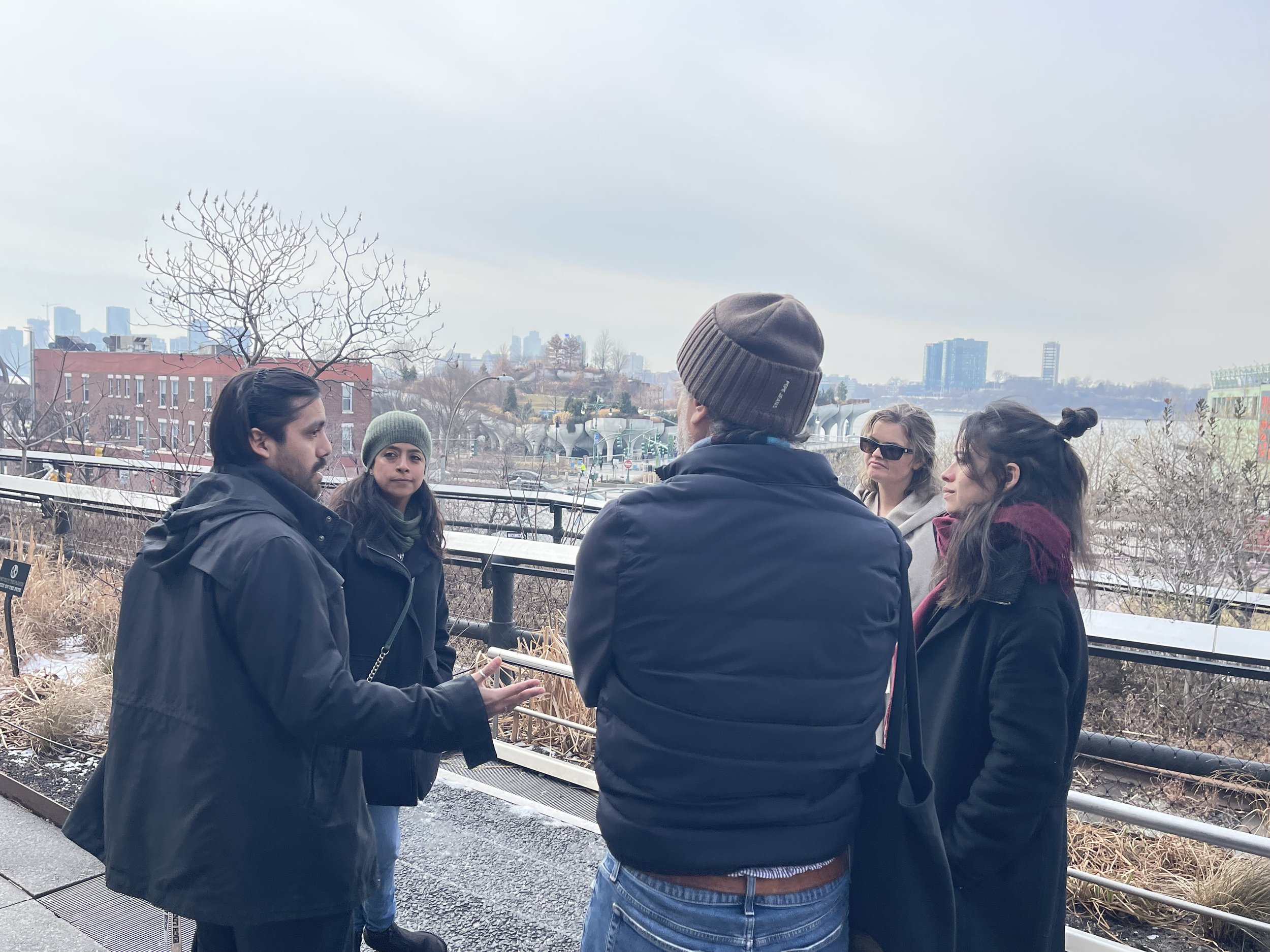Co-Designing Wild Urban Futures: A Journey from Ireland to New York City
FEATURE
By Mairéad O'Donnell
Mairéad O'Donnell is a PhD candidate at Trinity College Dublin and member of the European Research Council project NovelEco. As a Fulbright-EPA Scholar at the Urban Systems Lab, she explored how co-design processes can enhance urban wilding initiatives, working with communities along the North Brooklyn waterfront. Her research bridges ecological science, social engagement, and urban planning to create more biodiverse, resilient cities.
KEY TAKEAWAYS
Centering community "senses of justice" reveals how residents define fairness in climate retreat beyond technical metrics
Historical disinvestment undermines adaptation by fueling mistrust and emotional trauma after land buyouts
Vacant post-buyout land becomes a symbol of both abandonment and potential for community-led renewal
Immersive, trust-based research methods uncover perspectives often missed in top-down planning
Post-retreat strategies must integrate housing mobility, ecological restoration, and deliberative engagement to be just and effective
From Environmental Science to Community Engagement
My journey to studying urban wild spaces began during my undergraduate studies in Environmental and Geographical Sciences when I realized that while scientific knowledge is valuable, achieving real change requires genuine community engagement. This insight led me to pursue a master's degree in Development Practice focused on social sciences, and ultimately to my current PhD research bridging these domains.
My connection to the Urban Systems Lab (USL) began years before my arrival as a Visiting Scholar. During my undergraduate studies, I discovered the Lab's innovative work, and years later, through my involvement with NovelEco and the NATURA network, that early interest became reality.
Mairéad with participants during a workshop conducted in the National College of Art and Design, Dublin, Ireland.
Reimagining Urban Nature Through Co-Design
My PhD research focuses on novel ecosystems—environments irreversibly altered by human influence that cannot be restored to historical conditions. I investigate how co-design processes can support urban wilding by aligning social and ecological outcomes through three key investigations:
A systematic literature review of co-design in social-ecological systems
Comparative analysis of workshop implementations across three cities
An in-depth New York City case study
Graphical abstract from the publication titled “Redefining co-design for social-ecological research and practice: A systematic literature review” O’DONNELL, M., COLLIER, M., PINEDA-PINTO, M., COOPER, C., NULTY, F. & CASTAÑEDA, N. R. 2025a. Redefining co-design for social-ecological research and practice: A systematic literature review. Environmental Science & Policy, 164, 103998.
Bushwick Inlet Park emerged as an ideal site for my case study due to its history of heavy industrialization followed by natural reclamation, creating exactly the type of novel ecosystem my research explores.
This map shows the course of the original Bushwick Creek on today’s street grid. Bushwick Inlet Park (BIP) is highlighted above. This is where the envisioning workshops took place. Participants were asked to envision a future of multispecies cohabitation along the waterfront of the former creek and inlet (Kadinsky, 2016).
KADINSKY, S. 2016. Hidden Waters Blog [Online]. Available: https://hiddenwatersblog.wordpress.com/2016/12/11/bushwick1/ [Accessed 22nd Jan 2025]
Multi-Species Co-Design in Practice
Working with North Brooklyn Parks Alliance and the USL, I conducted a series of workshops bringing together diverse stakeholders including local citizens, community groups, urban planners, and academics. Recruitment was initially challenging as I wasn't embedded in the community, making institutional partners crucial gatekeepers who helped build trust with local participants.
Our methodology consisted of three interconnected components:
Immersive site walks where participants explored less managed "urban wild" sections of the parks, documenting sensorial experiences
Collaborative storytelling exercises where participants envisioned futures of multi-species flourishing in these formerly industrial sites
Multi-species role-playing where participants embodied various species—from butterflies and bumblebees to rats and invasive plants—reflecting on their needs and relationships
The role-playing component proved especially powerful in building ecological knowledge and fostering empathy, as even species initially viewed negatively became part of more nuanced conversations about ecosystem function. Consistently, participants' narratives shifted from control-oriented management approaches toward stewardship and cohabitation.
Pictures of the site with the NYC highrise in the background. Photo by Mairéad O’Donnell.
Participants of the Bushwick Inlet Park workshop during the walk. Photo by Mairéad O’Donnell.
Learning as the Primary Motivation
Post-workshop interviews and surveys revealed that participants primarily joined these co-design workshops to learn—about urban wild spaces, their local environment, or ecological processes in their neighborhood. This finding highlights the significant educational value embedded in collaborative design approaches.
The workshops created space for genuine knowledge exchange, where community members, planners, and academics could learn from each other's perspectives. This learning environment proved particularly effective in shifting perceptions about traditionally unwanted species. For example, participants initially advocated for removing certain non-native plants along the waterfront but came to recognize their crucial role in preventing bank erosion—illustrating how co-design can bridge ecological science with community values.
Mairéad with the participants during the storytelling exercise. Photo by Cate Pierson.
Participants during the storytelling session in one of the workshops. Photo by Mairéad O’Donnell.
Cross-Cultural Reflections on Urban Wilding
An unexpected finding emerged from conducting similar workshops in Dublin, Melbourne, and New York City. Despite anticipating significant differences in how communities engage with urban wild spaces, responses across these diverse urban settings showed remarkable consistency in how participants related to these spaces and how their perspectives shifted.
This similarity suggests these co-design methods could work effectively across various cultural contexts—valuable for the practical application of my research as I bring these findings back to Ireland. While my research currently focuses on cities in the Global North, expanding to include cities in the Global South remains an area I hope to explore to determine whether these approaches truly transcend all cultural contexts.
Mairéad at her desk at the Urban Systems Lab, The New School, February 2025. Photo by Valérie Lechêne.
USL as Enabler of Cross-Disciplinary Research
My success in NYC was significantly enhanced by the USL's structural support. Mentorship from USL Director Timon McPhearson helped connect my theoretical frameworks with New York's urban planning landscape, while guidance from Chris Kennedy on multi-species frameworks strengthened my work. The Lab provided a workspace within The New School where I found a community of like-minded researchers.
The lab created opportunities to present my methodologies to other researchers, facilitating valuable feedback that refined my approach. Regular check-ins with lab members helped navigate challenges in participant recruitment and workshop design, while access to specialized resources supplemented my literature foundation.
USL offers a balanced environment that respects independent research while providing integration into ongoing projects when relevant. Their administrative support with logistics allowed me to focus on research substance rather than procedural hurdles—creating an ideal environment for visiting researchers bridging theoretical frameworks with community-engaged urban ecology work.
USL members on a tour of the High Line with High Line Network. Photo by Valérie Lechêne.
Turning Research into Impact
As I approach the final months of my PhD, I'm translating workshop outcomes into practical guidelines for the North Brooklyn Parks Alliance to inform future waterfront planning. Sharing findings with the community that participated in my workshops is crucial to the co-design process.
This research will form a significant part of my PhD thesis, contributing to a broader understanding of how co-design enhances urban wilding initiatives. My first paper, establishing a comprehensive definition of co-design within social-ecological contexts, has already been published. My second paper documents how participants' narratives shifted from "management and control" toward "care, cohabitation, and stewardship" across workshops in Dublin, Melbourne, and Manhattan. The Bushwick Inlet Park case study will form my third paper, exploring how multi-species approaches in co-design can generate practical guidelines for urban planners.
Beyond the PhD, this work is just the beginning. Whether through academia or NGO work, I aim to continue bridging ecological science with community action to create lasting positive impact in urban environments.
Edited by Valérie Lechêne










